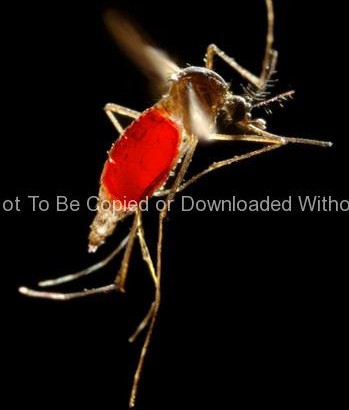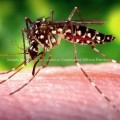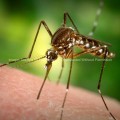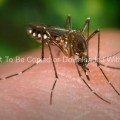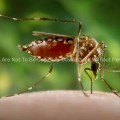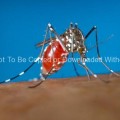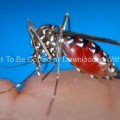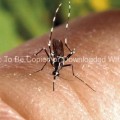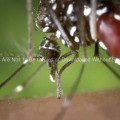With a newly-obtained fiery red blood meal visible through her transparent abdomen, the now heavy female Aedes aegypti mosquito took flight as she left her host’s skin surface. As it filled with blood, the abdomen became distended, stretching the exterior exoskeletal surface, thereby, causing it to become transparent, allowing the collecting blood to become visible as an enlarging intra-abdominal red mass. The wings seem to be working overtime in order to keep her aloft.
Dengue is a viral disease transmitted by urban Aedes mosquitoes, principally A. aegypti, a species found living in close association with humans in most tropical urban areas. Mosquito biting activity is greatest in the morning for several hours after daybreak and in the late afternoon for several hours before dark. It may feed all day indoors, in shady areas, or when it is overcast. This mosquito breeds in artificial water containers, such as discarded tires, cans, barrels, buckets, 55 gallon drums, flower vases, and cisterns, all frequently found in the domestic environment. Since 1980, the incidence of dengue has increased dramatically in tropical countries worldwide, with endemic and/or epidemic virus transmission documented in most countries of the Caribbean Basin, Central and South America, the Pacific Islands, Asia, and Africa; many countries have had multiple outbreaks. Epidemics are frequently not reported because of inadequate disease surveillance.
